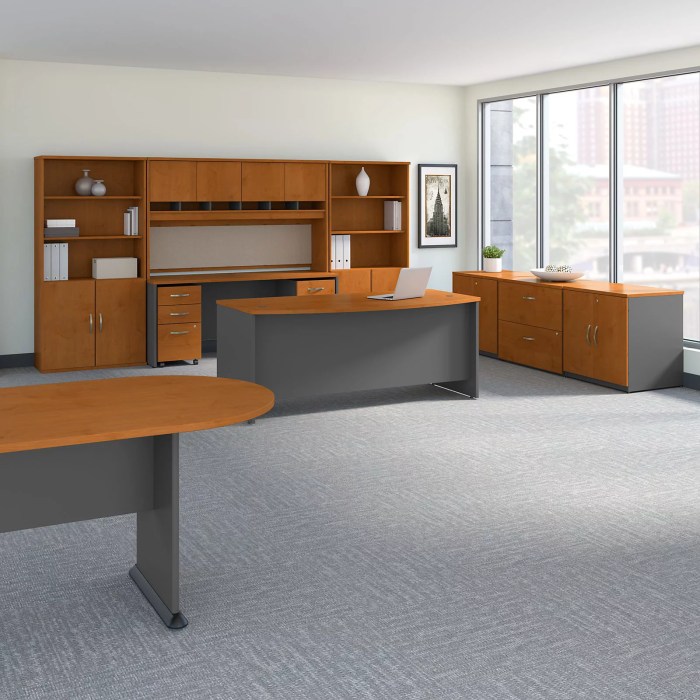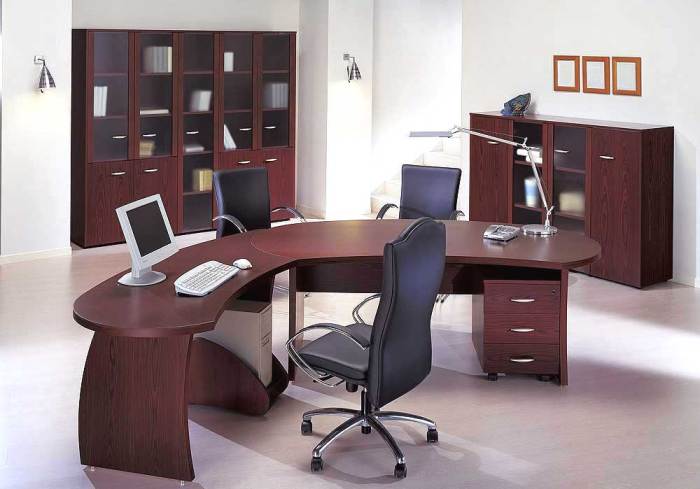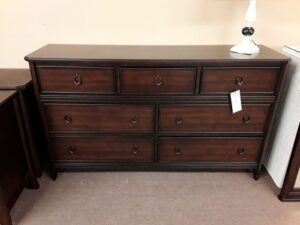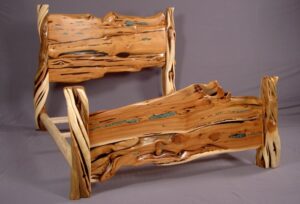Business office furniture plays a pivotal role in shaping the functionality, aesthetics, and overall ambiance of the workplace. From ergonomic chairs that promote employee well-being to innovative space-saving solutions that maximize efficiency, the realm of office furniture is constantly evolving to meet the demands of the modern workplace.
In this comprehensive guide, we delve into the significance, types, and benefits of business office furniture. We explore the importance of ergonomic design, functionality, and efficiency, and discuss how furniture can enhance employee health, productivity, and job satisfaction.
Overview of Business Office Furniture
Office furniture plays a crucial role in shaping the functionality, aesthetics, and overall well-being within a professional workspace. It not only provides employees with the necessary tools and comfort to perform their tasks efficiently but also contributes to the company’s brand image and employee satisfaction.
The market offers a wide array of office furniture options, ranging from traditional desks and chairs to ergonomic workstations and collaborative spaces. Each type and style caters to specific needs and preferences, ensuring that businesses can create work environments that align with their unique requirements.
Types of Office Furniture
- Desks:The foundation of any office setup, desks provide a surface for work and storage. They come in various shapes, sizes, and materials, including traditional rectangular desks, L-shaped desks for corner spaces, and height-adjustable desks for ergonomic benefits.
- Chairs:Equally important as desks, chairs support employees throughout the workday. Ergonomic chairs are designed to minimize discomfort and promote good posture, while executive chairs offer a more formal and luxurious seating experience.
- Storage Units:Filing cabinets, shelves, and drawers help organize and store office supplies, documents, and other materials. They come in different sizes and styles to accommodate various storage needs.
- Collaborative Furniture:In modern offices, collaborative spaces are becoming increasingly common. These areas feature furniture designed to encourage teamwork and idea-sharing, such as conference tables, whiteboards, and lounge seating.
Styles of Office Furniture
In addition to functionality, office furniture also comes in various styles to complement the overall aesthetic of the workspace.
- Contemporary:Characterized by clean lines, neutral colors, and sleek materials, contemporary office furniture creates a modern and sophisticated atmosphere.
- Traditional:Traditional furniture features rich wood tones, ornate details, and classic designs, evoking a sense of elegance and formality.
- Industrial:Inspired by warehouse aesthetics, industrial furniture incorporates exposed metal, concrete, and reclaimed wood, creating a raw and edgy look.
- Scandinavian:Scandinavian furniture emphasizes simplicity, functionality, and natural materials such as wood and leather, resulting in a cozy and inviting ambiance.
Ergonomic Considerations
Ergonomic design in office furniture is crucial for maintaining employee health and productivity. It involves creating workspaces that adapt to the user’s body, reducing physical strain and discomfort.
For business office furniture, moving furniture in house can be a hassle-free process. Whether you’re relocating to a new office or rearranging your current space, professional movers can assist with moving furniture in house efficiently. They handle the heavy lifting and ensure a seamless transition for your business office furniture, minimizing disruption to your operations.
Ergonomic features include:
- Adjustable chairs:Allow users to customize their seating position, reducing back pain and muscle fatigue.
- Standing desks:Promote movement and reduce the risk of sedentary-related health issues.
- Footrests:Improve circulation and reduce leg swelling.
- Keyboard trays:Position keyboards at an optimal height and angle, preventing wrist and shoulder strain.
Benefits of Ergonomic Furniture, Business office furniture
Ergonomic furniture offers numerous benefits, including:
- Reduced physical discomfort and pain
- Improved posture and spinal health
- Enhanced blood circulation
- Increased energy levels
- Boosted productivity and job satisfaction
Functionality and Efficiency
Office furniture plays a crucial role in enhancing functionality and efficiency within a business setting. It provides a supportive environment that optimizes workflow, maximizes space utilization, and promotes productivity.
Furniture layout is a key factor in creating an efficient workspace. A well-planned layout allows employees to move around easily, access necessary resources quickly, and collaborate effectively. It also ensures that there is sufficient space for both individual work and team projects.
Innovative and Space-Saving Solutions
Modern office furniture offers innovative solutions that enhance functionality while saving space. For example, height-adjustable desks allow employees to alternate between sitting and standing positions, promoting better posture and reducing fatigue. Modular furniture systems enable flexible configurations that adapt to changing needs and team sizes.
Other space-saving solutions include ergonomic chairs with adjustable lumbar support and armrests, stackable storage units, and wall-mounted shelves. These solutions maximize vertical space, minimize clutter, and create a more organized and efficient work environment.
Aesthetics and Ambiance

Office furniture plays a significant role in shaping the overall aesthetics and ambiance of the workplace. Well-chosen furniture can enhance the visual appeal of the office, create a positive work environment, and even reflect the company’s brand identity.
Furniture design can convey a company’s values and culture. For instance, a modern and minimalist design may suggest a forward-thinking and innovative company, while a more traditional design may convey a sense of stability and heritage.
Stylish and Functional Furniture Options
-
- Ergonomic chairs:Designed to provide comfort and support, ergonomic chairs can help reduce fatigue and improve posture.
- Adjustable desks:Allow employees to alternate between sitting and standing, promoting movement and reducing the risk of health issues associated with prolonged sitting.
- Collaborative furniture:Such as modular sofas and tables, can encourage teamwork and facilitate informal meetings.
li> Biophilic elements:Incorporating natural elements, such as plants or natural materials, can create a more inviting and calming work environment.
Sustainability and Environmental Impact

Sustainability in office furniture practices has become increasingly important as businesses recognize the environmental impact of their operations. Adopting eco-friendly materials and designs can significantly reduce the carbon footprint and contribute to a greener workplace.
Using sustainable materials, such as reclaimed wood, recycled plastics, and bamboo, reduces the demand for raw materials and minimizes deforestation. These materials often have a lower embodied carbon footprint compared to traditional materials like steel or concrete.
Environmental Benefits of Eco-Friendly Designs
Eco-friendly furniture designs focus on energy efficiency and resource conservation. Features like LED lighting, motion sensors, and adjustable workstations reduce energy consumption and promote ergonomic comfort. By incorporating natural light and ventilation, offices can minimize the reliance on artificial lighting and air conditioning, further reducing their environmental impact.
Examples of Sustainable Furniture Options
- Biodegradable Furniture:Made from materials like corn starch or bamboo, these furnishings break down naturally, reducing waste in landfills.
- Modular Furniture:Allows for easy reconfiguration and adaptability, extending the lifespan of furniture and reducing the need for frequent replacements.
- Recycled Furniture:Using post-consumer materials like plastic bottles or scrap metal, recycled furniture diverts waste from landfills and promotes circularity.
Trends and Innovations

The realm of business office furniture is constantly evolving, propelled by technological advancements and shifting workplace dynamics.
When it comes to outfitting your business office with stylish and functional furniture, Chapin Furniture is a name that stands out. Their extensive collection caters to every office need, from executive desks to ergonomic chairs. Whether you’re looking to create a modern and sophisticated workspace or a comfortable and inviting environment, Chapin Furniture has the perfect solutions to enhance your office’s productivity and aesthetics.
Technology has played a pivotal role in shaping the future of office furniture. Smart desks, for instance, enable users to adjust their height with ease, promoting ergonomic comfort and reducing the risk of repetitive strain injuries. Collaborative furniture designs, such as modular workstations and huddle spaces, foster teamwork and enhance communication.
Business office furniture encompasses a wide range of pieces designed to enhance productivity and comfort in the workplace. From ergonomic chairs and adjustable desks to filing cabinets and storage solutions, every element contributes to a functional and efficient work environment.
For those seeking high-quality business office furniture, the furniture of dalton offers a comprehensive selection crafted with exceptional materials and attention to detail. Their commitment to durability and style ensures that your office furniture will stand the test of time while creating an inspiring and productive space.
Emerging Trends
- Sustainability:Growing environmental awareness has led to a surge in eco-friendly office furniture options, made from recycled materials and designed to minimize waste.
- Wellness:Office furniture now prioritizes employee well-being, with ergonomic chairs, adjustable desks, and biophilic elements that promote physical and mental health.
- Technology Integration:Furniture seamlessly integrates technology, featuring built-in charging stations, interactive displays, and sensors that track usage and optimize space utilization.
Innovative Furniture Designs
- Active Seating:Designed to encourage movement and reduce sedentary behavior, active seating solutions, such as balance balls and wobble chairs, promote posture and core strength.
- Acoustic Privacy:With the rise of open-plan offices, acoustic privacy has become essential. Furniture with sound-absorbing materials, such as upholstered partitions and enclosed pods, create private workspaces.
- Modular Furniture:Flexible and adaptable, modular furniture allows businesses to easily reconfigure their office layout to accommodate changing needs, promoting collaboration and agility.
Final Wrap-Up
In conclusion, business office furniture is not merely a collection of desks and chairs; it is an integral part of the workplace ecosystem that can significantly impact employee well-being, productivity, and the overall success of the organization. By carefully considering the factors discussed in this guide, businesses can create workspaces that are both functional and inspiring, fostering a positive and productive work environment.
Questions Often Asked: Business Office Furniture
What are the key considerations when choosing business office furniture?
Ergonomic design, functionality, aesthetics, and sustainability are crucial factors to consider when selecting business office furniture.
How can ergonomic furniture improve employee health and productivity?
Ergonomic furniture reduces physical discomfort, improves posture, and promotes overall well-being, leading to increased productivity and job satisfaction.
What are some innovative space-saving furniture solutions for small offices?
Multi-functional furniture, stackable chairs, and modular workstations are space-saving solutions that optimize space utilization in small offices.





Leave a Comment